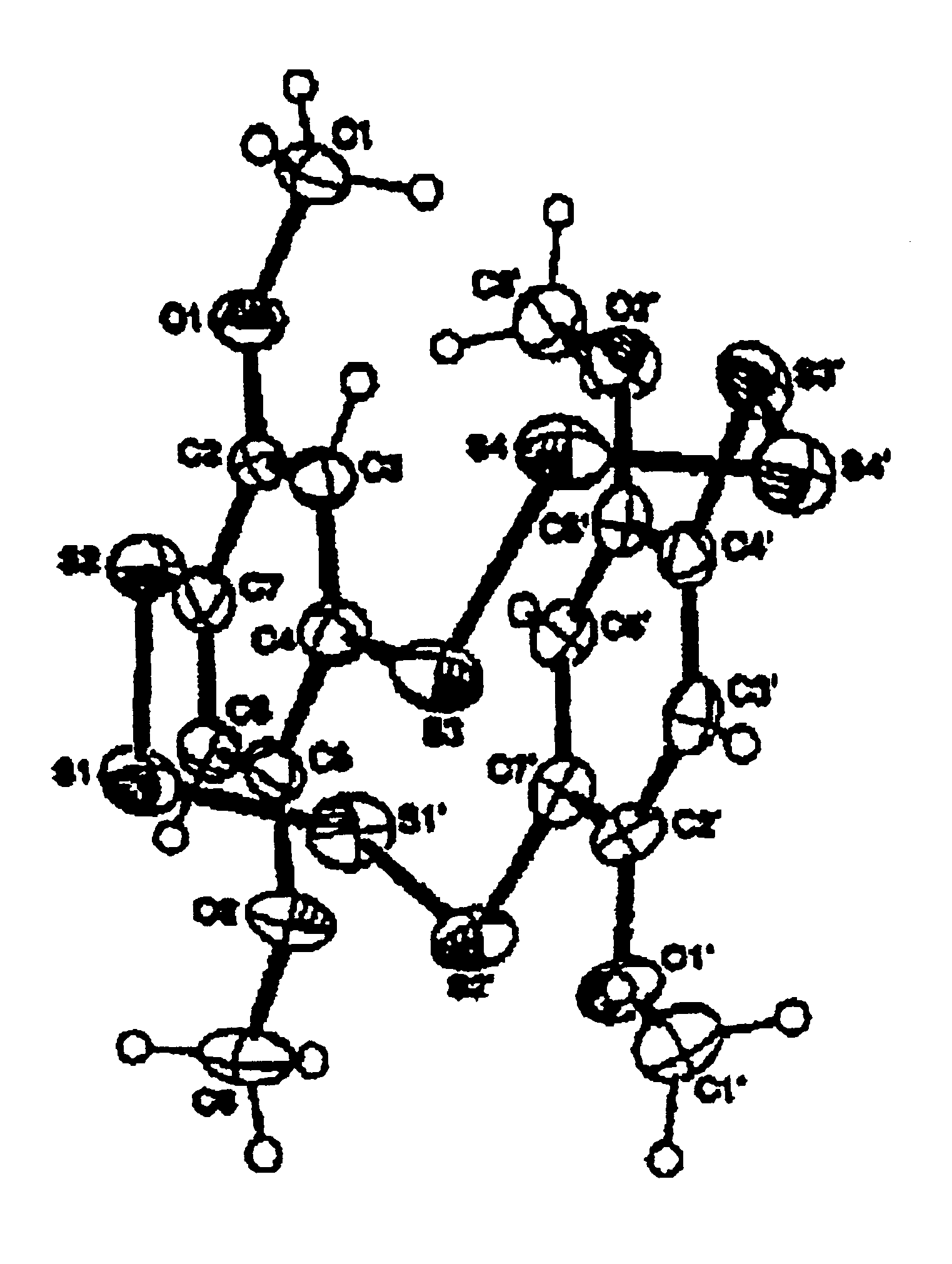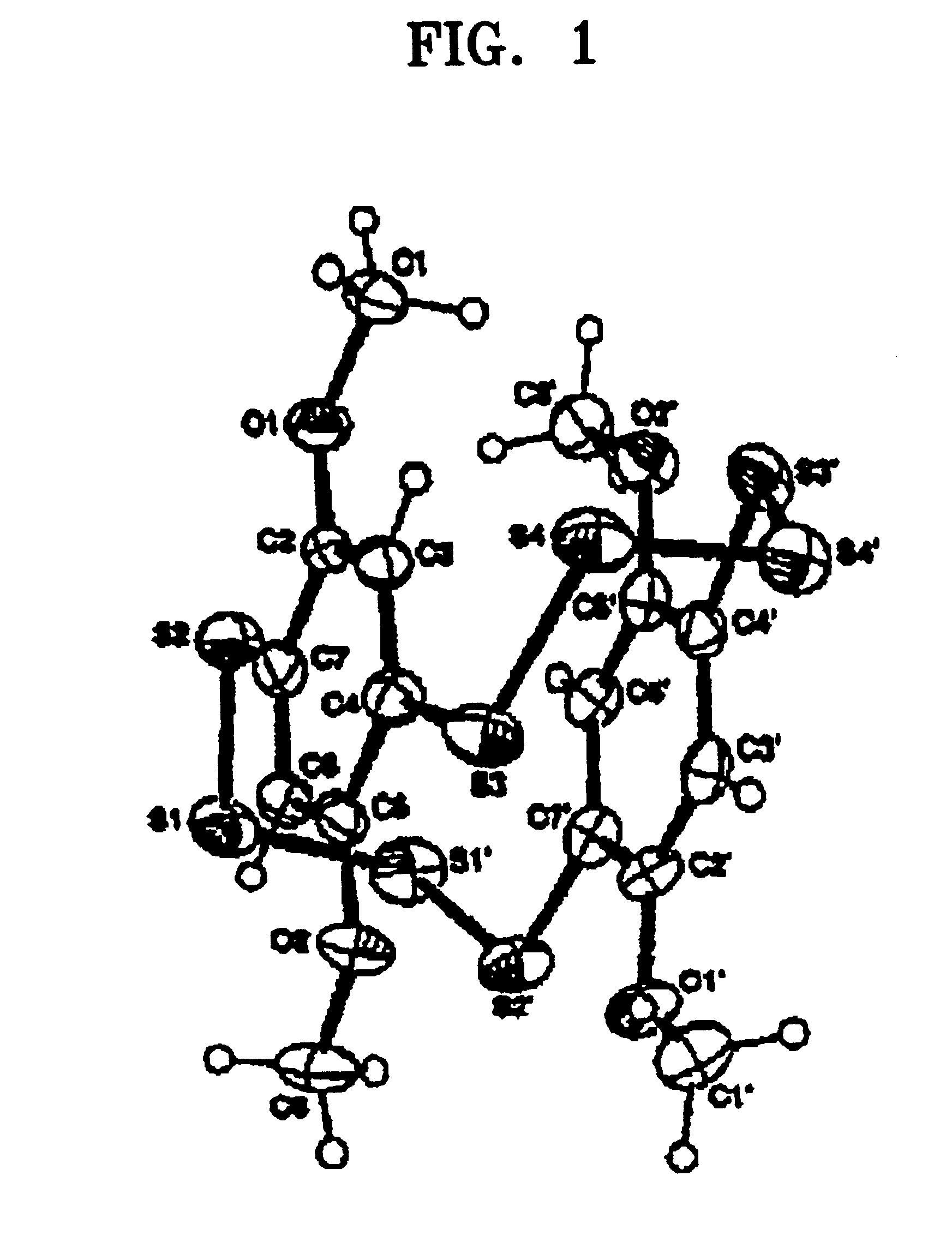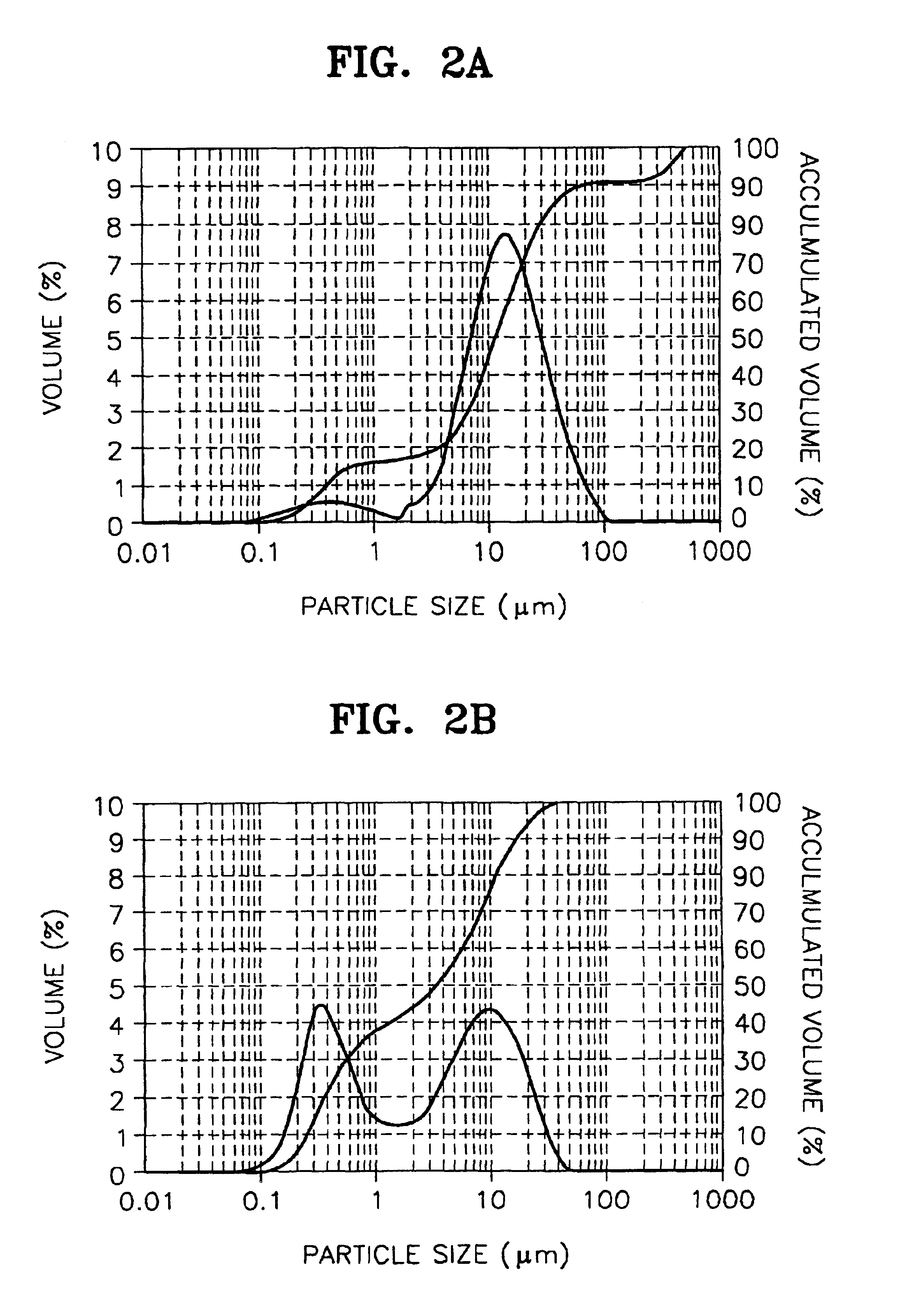Cathode active material and lithium battery employing the same
a lithium battery and active material technology, applied in the field of cathode active materials and lithium batteries, can solve the problems of heavy metal use, low equivalent weight of electrode active materials, and high demand for secondary batteries using environmentally benign materials, etc., and achieve excellent electrochemical utilization efficiency and capacity characteristics, high reversibility of charging/discharging reaction, and easy processing
- Summary
- Abstract
- Description
- Claims
- Application Information
AI Technical Summary
Benefits of technology
Problems solved by technology
Method used
Image
Examples
synthesis example 1
Preparation of Organopolysulfide Represented by Formula 2
5 mmol of 1,2-dimethoxybenzene (to be abbreviated as DMB) (691 mg) was put into a 100 ml two-neck round-bottomed flask having a magnetic bar in a hood where ventilation efficiency is good, under a nitrogen atmosphere and then 10 ml of methylene chloride was added thereto. Next, 10 mmol of sulfur monochloride (S2Cl2) (to be abbreviated to as SMC) (1.0 M, 2 equivalents) was injected at room temperature over a 1 minute period using a syringe having a gas preventing structure, and then the reaction mixture was stirred. One end entrance of the flask was closed with a rubber cap, and the other end entrance was opened so that gases such as chloride or hydrogen chloride could escape, and a NaOH trap device was added thereto.
The reaction mixture so obtained was stirred for 2 hours, and then allowed to stand, without stirring. After a lapse of one day, black needle-shaped crystals were produced from the reaction mixture. After a lapse o...
synthesis example 2
Preparation of Organopolysulfide Represented by Formula 2
342 mg of an organopolysulfide represented by formula 2, which is a black needle-shaped solid, was obtained in the same manner as in Synthesis Example 1, except that 4 equivalents, rather than 2 equivalents, of SMC were used.
Elemental analysis was carried out for the organopolysulfides represented by formula 2 obtained by Synthesis Examples 1 and 2 using an elemental analyzer, to measure the content of sulfur related to the battery capacity.
The measurement result showed that the ratio of carbon (C) to hydrogen (H) to sulfur (S) was 56.8:5.3:18.9, in the organopolysulfide represented by formula 2 prepared by Synthesis Examples 1 and 2.
synthesis example 3
Preparation of Organopolysulfide (n=2-10) Represented by Formula 3
5 mmol of 1,3-DMB (691 mg) was put into a 100 ml two-neck round-bottomed flask having a magnetic bar, placed in a hood where ventilation efficiency is good, Pro under a nitrogen atmosphere, and then 100 ml of methylene chloride was added thereto. Next, 10 mmol of SMC (1.0 M, 2 equivalents) was injected at room temperature over a 1 minute period using a syringe having a gas preventing structure, and then the reaction mixture was stirred. One end entrance of the flask was closed with a rubber cap, and the other end entrance was opened so that gases such as chlorine or hydrogen chloride could escape, and a NaOH trap device was added thereto.
In the course of stirring the reaction mixture, large amounts of gases were produced and the color of the reaction mixture was red.
The reaction mixture so obtained was stirred for 5 minutes, and then allowed to stand, without stirring. After a lapse of one day, the color of the reacti...
PUM
| Property | Measurement | Unit |
|---|---|---|
| conductive | aaaaa | aaaaa |
| particle size | aaaaa | aaaaa |
| electrochemical utilization efficiency | aaaaa | aaaaa |
Abstract
Description
Claims
Application Information
 Login to View More
Login to View More - R&D
- Intellectual Property
- Life Sciences
- Materials
- Tech Scout
- Unparalleled Data Quality
- Higher Quality Content
- 60% Fewer Hallucinations
Browse by: Latest US Patents, China's latest patents, Technical Efficacy Thesaurus, Application Domain, Technology Topic, Popular Technical Reports.
© 2025 PatSnap. All rights reserved.Legal|Privacy policy|Modern Slavery Act Transparency Statement|Sitemap|About US| Contact US: help@patsnap.com



